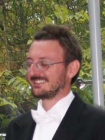dr. L. (Luca) Alessandri

Salt and Power. Early States, Rome and Resource Control
Salt is indispensable to society, past and present. Human and animal health depend on this resource, as did the preservation of food in the past. Salt was the only means available to preserve and trade foodstuffs essential for the first large towns with thousands of citizens. For central Italy’s early city-states, control over salt resources was crucial. The project aim is to establish how salt was produced before their installation and how salt production kept pace with the rising population of the early states, in particular Rome. We will investigate these questions with an up-to-date methodology to contribute with a historically important case study to the global archaeological and anthropological debate on salt-making and resource control in the context of prehistoric and early state societies. The 4-year project is based at the University of Groningen and funded by the Dutch Research Council (NWO).
The Avellino Event: Cultural and demographic impacts of the giant Bronze Age eruption of Mount Vesuvius
Around 1995 BC, during the Early Bronze Age, a giant eruption of Mount Vesuvius buried a flourishing landscape of villages and fields in the plains to the north and east of the volcano under more than a meter of ash. Inhabitants of Campanian sites such as Nola (‘the Bronze Age Pompeii’) barely escaped with their lives. Italian archaeological research since the 1980s has already shown that the population of the Campanian plain did not fully recover for several centuries after this so-called ‘Avellino Event’, but no one has yet wondered where the substantial Early Bronze Age population of Campania could have sought refuge, or what impacts it would have had there. GIA researchers dr. Martijn van Leusen and Prof. Peter Attema received € 750,000 to carry out an interdisciplinary study into the cultural and demographic impacts of the disastrous event. Their hypothesis is that given the topography of central-southern Italy, the most likely refuge area will have been to the north, in the coastal zone of what is now South Lazio. Here, two wetland coastal plains – the Fondi basin and the Agro Pontino - could have provided the space and resources to absorb the fleeing population. This research program starts on June 1, 2015 and will run for four years.
